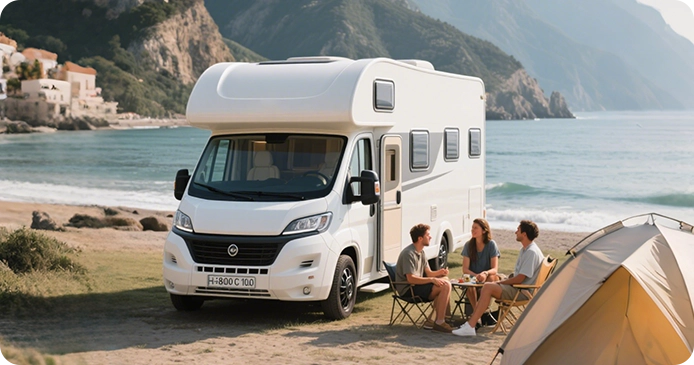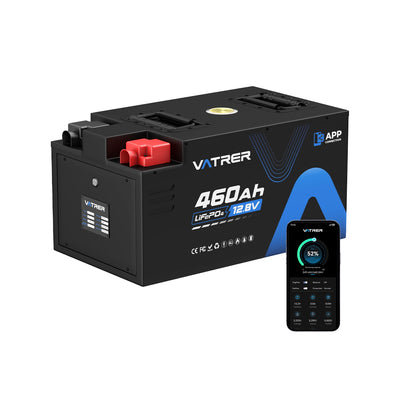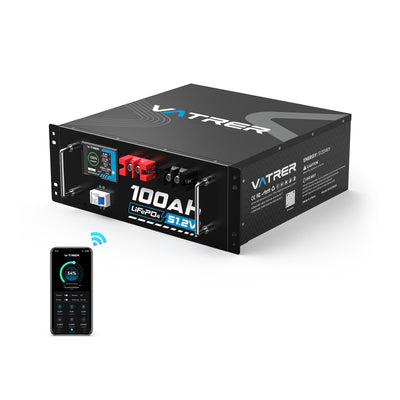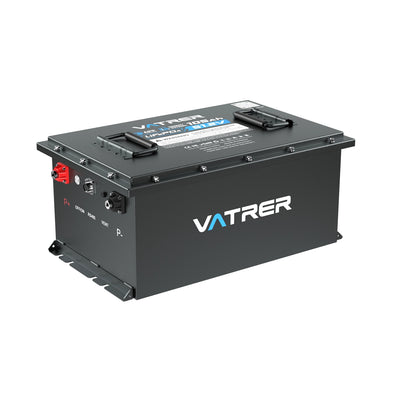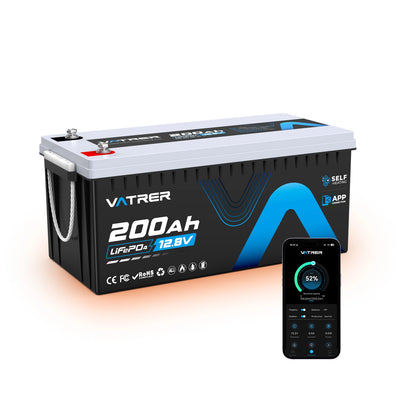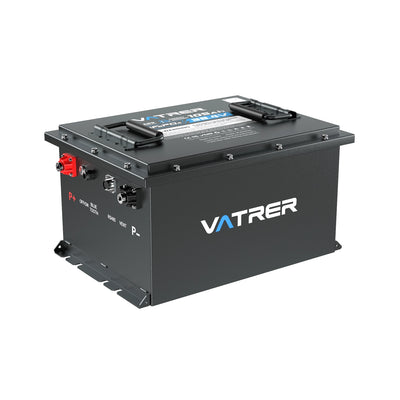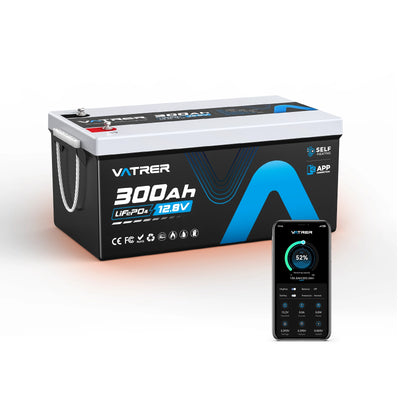
Can You Use 3 12V Batteries In a 36V Golf Cart?
Upgrading or replacing your golf cart’s power system can feel daunting, especially when you’re wondering, “Can I use three 12V batteries in a 36V golf cart?” The answer is yes—if you do it right. This guide explains how to make it work, what to watch for when choosing 12V golf cart batteries, and why lithium options might be your best bet. Whether you’re a weekend golfer or a cart enthusiast, we’ll walk you through the steps to ensure your 36V golf cart runs smoothly, safely, and efficiently.

What Are Golf Cart Battery Systems and How Do They Work
Golf carts rely on deep-cycle batteries to deliver steady power over long periods, unlike car batteries that provide short bursts for starting engines. Most carts operate at specific voltages—36V, 48V, or 72V—matched to the motor and controller to ensure smooth performance and prevent damage.
For a 36V golf cart, the standard setup often involves six 6V batteries wired in series, but three 12V batteries can achieve the same voltage. Precision is key: a voltage mismatch can lead to sluggish acceleration or premature wear. Always check your cart's manual—brands like EZ-GO, Club Car, or Yamaha specify compatible battery types, such as flooded lead-acid, AGM, or lithium. This step ensures your 36V golf cart batteries align with system requirements, minimizing risks and maximizing reliability for worry-free rides.
Can I Power a 36V Golf Cart with Three 12V Batteries
Yes, you can power a 36V golf cart with three 12V batteries by wiring them in series, but choosing the right batteries is critical. Golf carts require deep-cycle batteries designed for repeated deep discharges, unlike starter batteries built for quick bursts.
You need to ensure all three 12V golf cart batteries are identical in type (e.g., lithium, AGM), capacity, age, and brand to prevent imbalances that reduce runtime or cause uneven wear—mismatched batteries can stress the system and shorten lifespan. Aim for at least 100Ah per battery to support typical cart needs, and choose rugged designs to withstand vibrations on rough terrain.
Lithium 12V golf cart batteries are a top choice due to their lightweight build and consistent performance. Their Battery Management System (BMS) balances cells, protects against overcharging, and monitors temperature, ensuring safety and longevity. However, verify that your cart's controller supports lithium's flatter voltage curve—unlike lead-acid, lithium maintains higher voltage longer, so older controllers may need recalibration or replacement for optimal performance. Consult your manual or a technician to confirm compatibility before upgrading.
It's worth noting that when it comes to lithium-ion batteries, if you choose three 12V batteries, the performance will be significantly reduced compared to a single 36V lithium-ion battery pack. Furthermore, for complex terrain, such as hill climbing, the stable current provided by 12V is more suitable for RV travel or solar power generation systems. Vatrer 36V lithium batteries support instantaneous peak currents of up to 400A-600A.
What Are the Best Battery Types for Your 36V Golf Cart
Choosing the right battery type depends on your budget, usage, and maintenance preferences. While lead-acid batteries have been a staple, lithium is gaining popularity for its efficiency in 36V golf cart batteries. To help you decide, the table below compares key types, focusing on practical factors like cost, lifespan, and performance.
| Feature | Lead-Acid (Flooded) | AGM | Gel | Lithium (LiFePO4) |
|---|---|---|---|---|
| Typical Lifespan | 2-4 years (~300-500 cycles) | 3-5 years (500-800 cycles) | 3-6 years (500-1,000 cycles) | 8-10+ years (4,000+ cycles) |
| Weight (per 12V/100Ah) | ~60-70 lbs | ~50-60 lbs | ~55-65 lbs | ~25-30 lbs |
| Maintenance | Regular watering, cleaning | None | None | None |
| Charge Time (Full) | 8-10 hours | 6-8 hours | 6-8 hours | 2-5 hours |
| Upfront Cost (100Ah) | $100-$200 | $200-$300 | $250-$350 | $600-$900 |
| Best For | Budget setups | Spill-free reliability | Extreme temperatures | Long-term efficiency |
Lithium's longer lifespan and faster charging minimize downtime, while its lighter weight can improve cart handling and extend range by 10-20% compared to lead-acid. Though pricier upfront, lithium's 4,000+ cycles translate to a cost of $0.15-$0.20 per cycle versus $0.50-$0.70 for lead-acid, offering significant savings over time. For series setups, ensure lithium batteries have a robust BMS to maintain cell balance and safety across all three units.
How Do You Configure Three 12V Batteries for a 36V Golf Cart
Wiring three deep-cycle 12V golf cart batteries for a 36V system is manageable with careful execution to prevent shorts or overheating. Series wiring sums the voltages (12V + 12V + 12V = 36V) while amp-hours (Ah) remain constant, so ensure sufficient capacity—typically 100Ah supports 18-36 holes of games per charge, depending on terrain and load.
Follow these steps for a secure setup:
- Prepare the Batteries: Fully charge each battery and clean terminals to ensure good connections. Position them securely in the cart's tray, leaving space for cables and ventilation to avoid heat buildup, especially for lead-acid batteries.
- Wire in Series: Connect the positive (+) terminal of the first battery to the negative (-) of the second using 2-4 gauge cables. Repeat for the second to the third. The free negative on the first and positive on the third are your 36V output points.
- Connect to the Cart: Attach the cart's main negative cable to the first battery's negative and the positive to the third's positive. Tighten connections to 8-10 ft-lbs to prevent loosening on bumpy rides.
If the batteries Ah is insufficient (e.g., 50Ah for a 100Ah need), wire pairs in parallel to double Ah, then connect three pairs in series for 36V. This requires more space, so measure your tray first. Lithium batteries with a BMS automatically balance cells, reducing maintenance compared to lead-acid. Always double-check your cart's manual for specific wiring diagrams or restrictions to ensure compatibility.
What Safety Precautions Should You Take During Installation
Battery installation involves electricity and potential chemical hazards, so safety is non-negotiable. Mishandling can lead to sparks, acid exposure, or equipment damage. Before starting, disconnect the cart's main power switch and remove all existing battery cables.
Wear safety glasses, rubber gloves, and use insulated tools (e.g., rubber-handled wrenches) to prevent short circuits. Work in a well-ventilated area to avoid hydrogen gas buildup from lead-acid batteries, and remove metal jewelry to eliminate risks of accidental bridging. Keep flames, cigarettes, or spark-producing tools far away.
Verify polarity (+ to -) during wiring—reversing connections can fry your cart's electronics. If you're unsure, consult a technician or have a second pair of eyes check your work. These precautions protect you and ensure your 36V golf cart batteries are installed without issues.
How Do You Choose the Right Charger for Your 36V Battery Pack
Using the wrong charger can damage your batteries or create safety risks, like overcharging or overheating. For a 36V system with three 12V batteries, select a 36V charger matched to your battery chemistry—lead-acid, AGM, gel, or lithium.
Lead-acid chargers use multi-stage profiles, while AGM and gel require specific settings to prevent gassing. Lithium batteries need a constant current/constant voltage (CC/CV) charger that communicates with the BMS to optimize cell balancing and prevent overvoltage—using a lead-acid charger on lithium can destroy the pack. Choose a charger with 10-20A output for 100Ah packs to achieve 4-6 hour charge times.
Opt for smart chargers with auto-shutoff to avoid overcharging, especially for overnight use. Check the battery manufacturer recommendations to confirm compatibility. This ensures your 36V golf cart batteries charge efficiently and stay in top shape.
How Can You Test Your 36V Setup After Installation
After wiring, verify your setup before driving to catch issues early. Use a multimeter to measure the pack’s output across the first battery’s negative and third’s positive—expect 36–38V for lead-acid (fully charged) or 38.4–39.6V for lithium (LiFePO4 nominal 12.8V per battery). Readings outside these ranges suggest loose connections or mismatched batteries.
Conduct a short, flat test drive, noting power dips, slow acceleration, or unusual noises. For lithium setups, check the BMS via its display or app for alerts like overcurrent, cell imbalance, or high temperature. Log runtime to establish a baseline—expect 18–36 holes for a 100Ah pack, depending on usage. If issues arise, recheck connections, replace mismatched batteries, or consult a technician. These tests ensure your 36V golf cart batteries deliver reliable performance.
Can a Single 36V Lithium Battery Simplify Your Golf Cart Power
Instead of managing three batteries, a single 36V lithium battery eliminates series wiring, saves space, and reduces connection points that can loosen over time. These batteries match the Ah of multi-battery setups in a compact package, with a built-in BMS for cell balancing, thermal protection, and app-based monitoring. Their lighter weight—often half that of lead-acid—extends range by 10–20% and reduces cart wear.
The main drawback is the higher upfront cost, but 4,000+ cycles make it cost-effective long-term. Vatrer's 36V lithium golf cart batteries, designed for EZ-GO, Club Car, and Yamaha, feature a 200A BMS for overcharge and short-circuit protection, CE certification for safety, and a touchscreen/app for real-time voltage and temperature data. With IP67 waterproofing, 4,000+ cycles, and online customer support, they're built for rugged daily use and charge in just 5 hours. Visit Vatrer's shop for complete kits with cables and mounts for an easy upgrade.
How Should You Maintain and Recycle Your 36V Golf Cart Batteries
Proper care extends battery life, with requirements varying by type. Lead-acid batteries need monthly water level checks and terminal cleaning to prevent corrosion. Recycle them at certified hazardous waste facilities to avoid environmental harm from lead and acid — check local regulations or services like Call2Recycle for locations.
AGM and gel batteries are maintenance-free and perform best at stable temperatures. Lithium batteries require no fluid checks; simply monitor the BMS periodically via app for alerts on heat, voltage, or cell balance. Like lead-acid batteries, lithium batteries should be recycled at certified centers to recover valuable materials safely.
Store all batteries in a cool, dry place during off-seasons to minimize self-discharge. Choosing lithium reduces environmental impact due to its longer lifespan and fewer replacements. These practices keep your 36V golf cart batteries efficient and eco-friendly.
What's the Smart Way to Power Your 36V Golf Cart?
Using three 12V deep-cycle batteries in a 36V golf cart is entirely feasible with proper series wiring and matched batteries. Lithium options, whether as a trio or a single 36V pack, offer superior longevity, efficiency, and ease, thanks to features like BMS protection. Prioritize safety, use a compatible 36V charger, and test your setup to ensure reliable performance.
For the best balance of simplicity and value, consider a single 36V lithium battery from trusted brands like Vatrer Power, which deliver durability and smart features tailored for golf carts. Always consult your cart's manual or a technician for specific compatibility advice. Ready to upgrade? Explore Vatrer's lithium golf cart battery solutions for a powerful, hassle-free ride on your next golf adventure.
Share





























